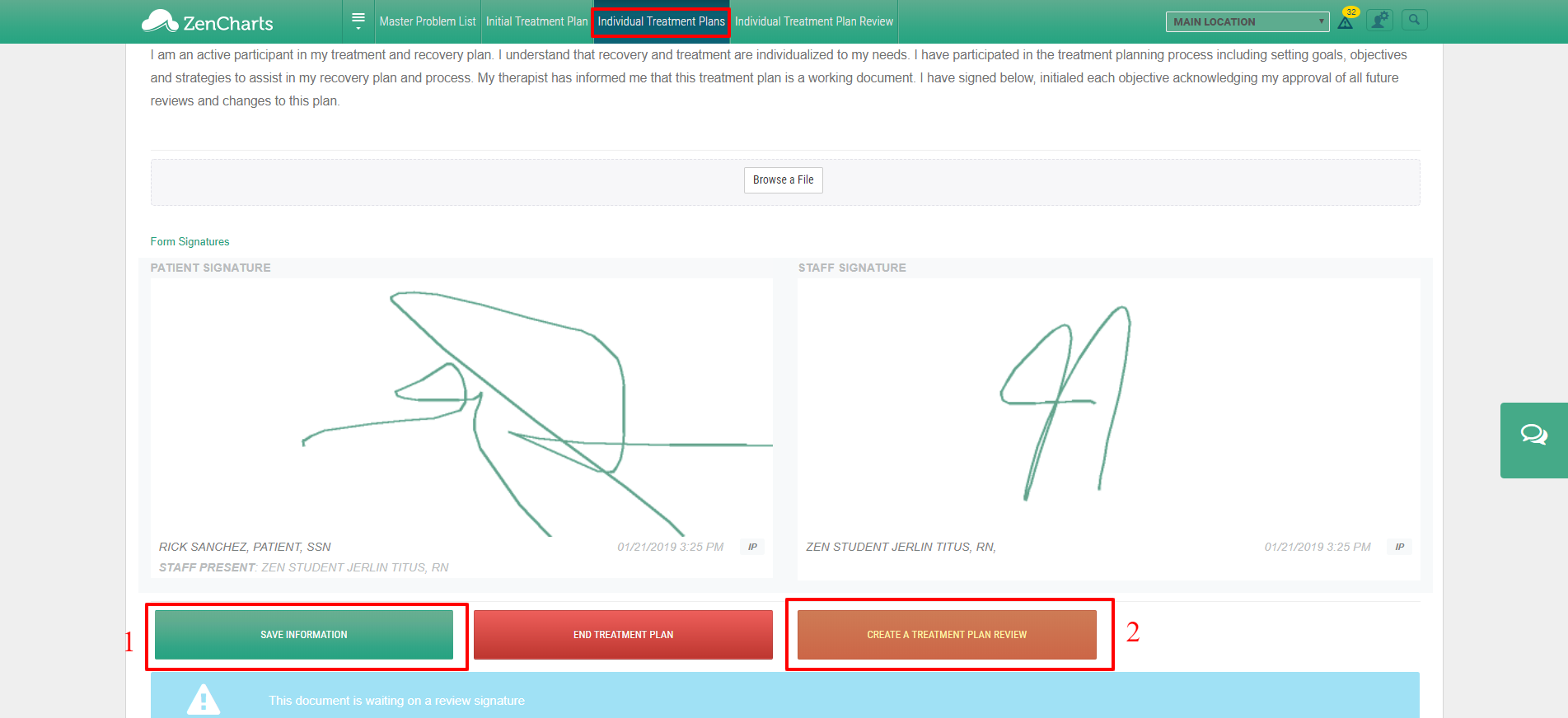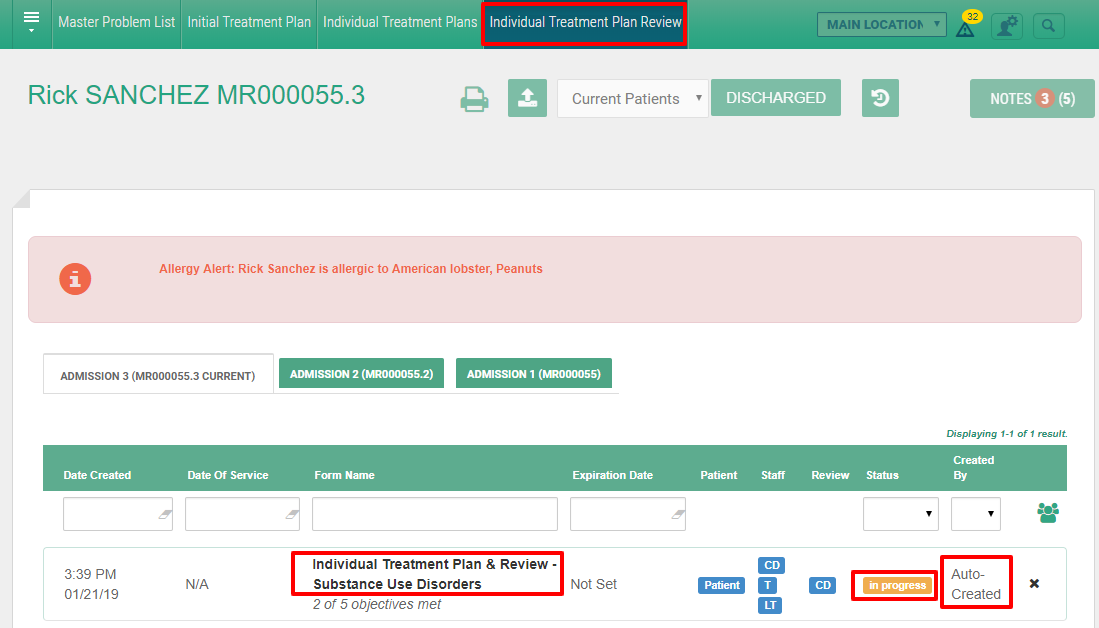How To Complete A Treatment Plan Review (Method 1)
Note there are two ways to create a Treatment Plan Review (TPR), it is important to know which method your facility uses because each server is set up differently based on how the TPR is done. This help article instructs you on how to create a TPR using the "create a treatment plan review" button from within each individual treatment plan. The second method is to simply add a form and type out the updates into the form, here is a help article for the other method: Method 2
(You will need an active treatment plan before you can create a review, we will be assuming this has already been completed)
Login to ZenCharts, and select the client's chart you will be working in.
Go to the main Navigation and select Treatment Plans.
Click on "Individual Treatment Plan" tab on the top navigation bar (This will be the tab you will always work in when making any updates to your treatment plan), then click into the active individual plan you will be working on.

Find the objective you are working on and:
Select the status (progress of the objective) from the drop down.
Click Save Status (wait for status to save and for page re-load) A revision text area will appear for you to make any updates from the original objective, interventions, dates and status (the original will now be grayed out and will not be editable). If you have selected a status of "met" or "attained", then a revision box will not appear.
Fill out the revision text area and input the new target date, and status date - the status date is the current date in which you are sitting with the client for the review. Do not set the status on this, it will automatically be set at unmet, this is the status you will be updating on your NEXT review.

Repeat steps 1-3 for each objective in the individual treatment plan that you are addressing.
Once all revisions are complete, scroll to the bottom and click "Save Information".
(Pro Tip: When you are on any screen, and need to go directly to the bottom on the screen, press the "End" button on your keyboard and it will scroll all the way to the bottom for you)
Once the page reloads after saving all the revisions, scroll to the bottom of the page and click on "Create a Treatment Plan Review".
All required signatures (patient, staff/reviewer) must be on each individual treatment plan before the option to create a treatment plan review becomes available.

When the page reloads after clicking "Create Treatment Plan Review" it will automatically direct you into the "Individual Treatment Plan Review" tab.
Click into the Individual Treatment Plan & Review form that was just created (if there are several forms here, look at the creation date and time to find your form that was just created by the system), this will be an exact copy of the individual treatment plan you updated with all the new revisions that you've added, no other changes need to be done on this form.
(if you decide to make edits to this review form, keep in mind this information will not move backwards to the original individual treatment plan that is your live an active document for the course of treatment)

Scroll to the bottom of the form and have all applicable parties sign the form.
Once everyone has signed the form, click "End Treatment Plan" to close out this individual treatment plan review.
Repeat these steps every time you sit down with the client to complete a treatment plan review.
In summation: Always make all your revisions to the original individual treatment plan in the individual treatment plan tab/menu location (this is your active and live document for the duration of the client's stay or till the treatment plan has ended), then save the updates, click "create treatment plan review" this will bring you to the individual treatment plan review tab, open the form, all parties sign, and then end that treatment plan review to close it out.
